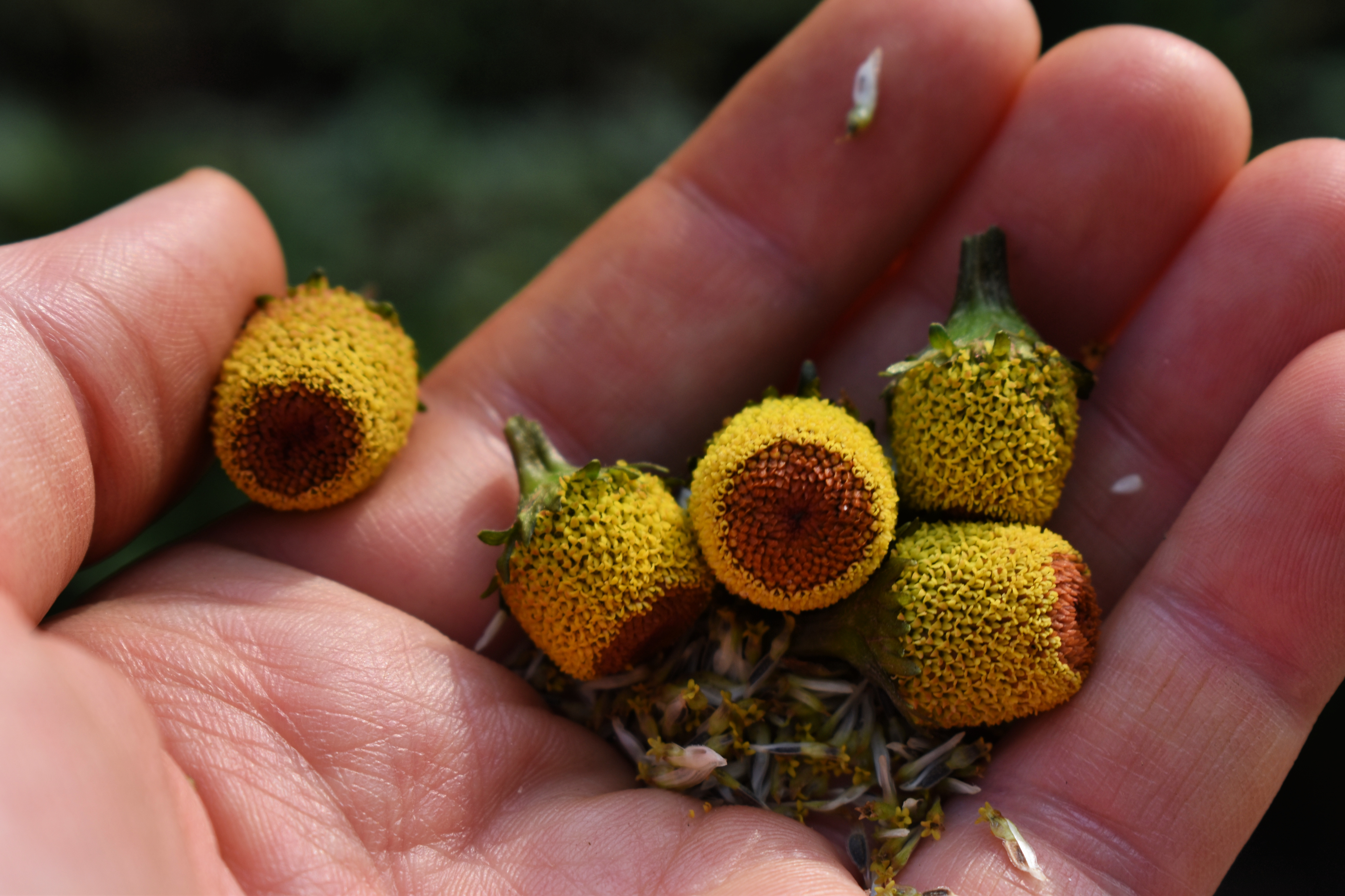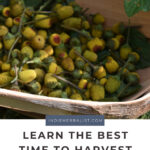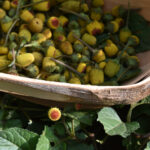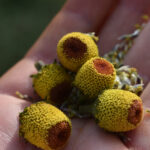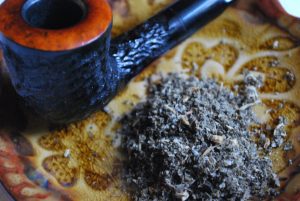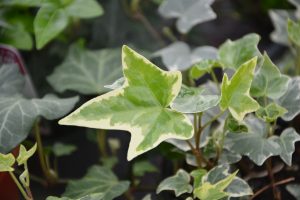Links contained in this post and elsewhere on my website may include affiliate links. When you make a purchase through these links, I earn a commission at no additional cost to you. I only link to products and services that I love - and that I think you will love, too!
This year, I grew Spilanthes acmella (aka Acmella oleoracea) for the first time. That was the easy part. The tricky part was figuring out the best time to harvest Spilanthes! With herbal flowers like chamomile, the best harvest day is the first day the petals open on a flower bud. But spilanthes is different. It doesn’t have rayed flowers like chamomile. It has an inflorescence that resembles the center of a sunflower, but without the petals around the edges.
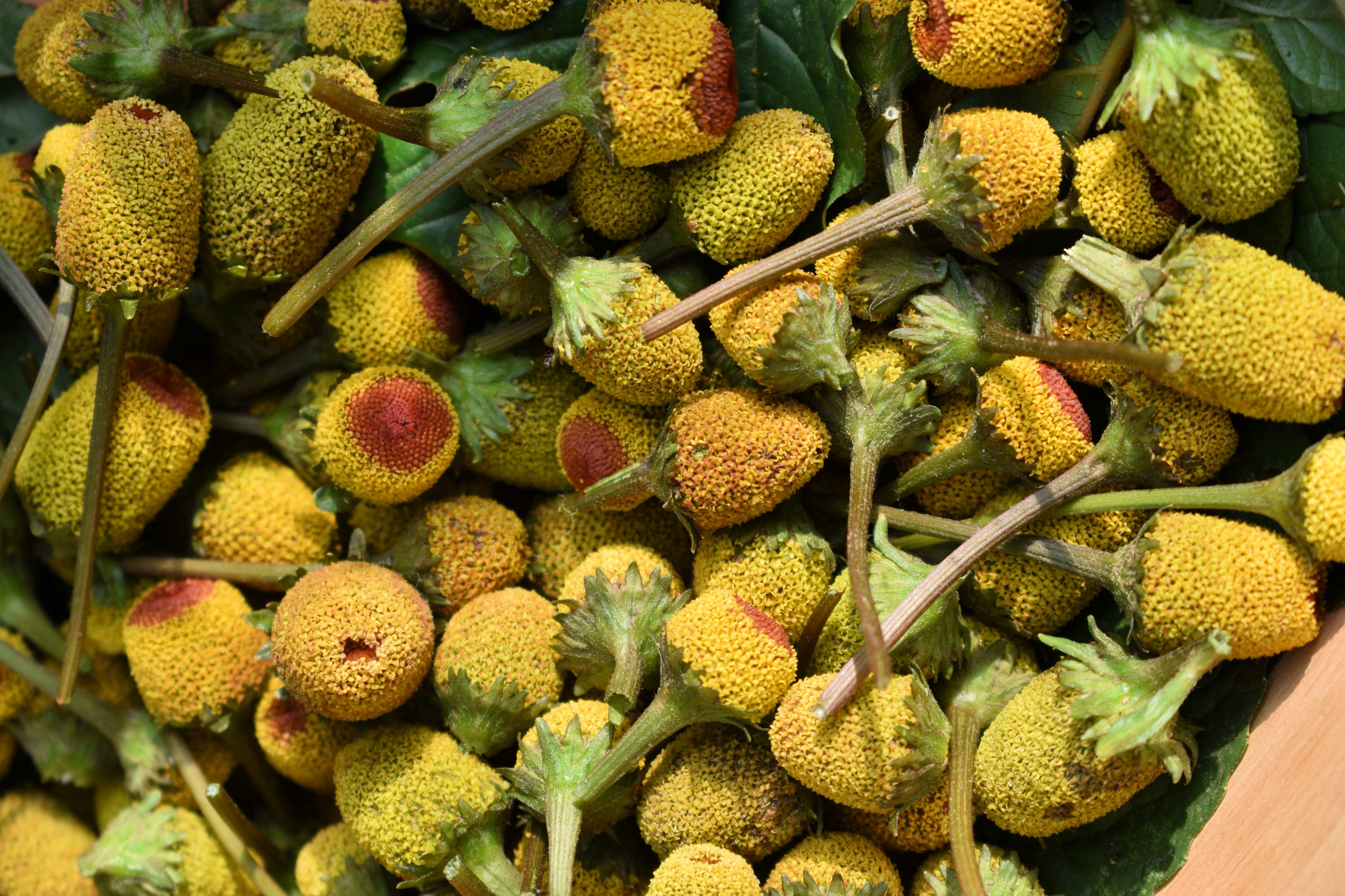
The flowers are the best part of Spilanthes to harvest if you’re interested in making your own teas and extracts. They seem to be more potent than the leaves to me, although from what I understand, the leaves are also being studied.
Why harvest Spilanthes?
Spilanthes has a diffusive, numbing quality that makes your whole mouth tingle when you chew the leaves or flowers. This makes it popular for mouth, gum, and throat issues in traditional herbalism. Modern herbalism also seems to be interested in its potential as an immunomodulator, similar to Echinacea. If you’ve ever had the pleasure of experiencing high-quality Echinacea, you’ll know that Echinacea also makes your mouth tingle a bit. Although, not nearly to the extent that Spilanthes does!
My experience harvesting Spilanthes
This was my first year growing Spilanthes in my garden, and so far the experiment has gone very well! Spilanthes is a perennial in zones 10-12, but I’ve been growing it as an annual and have been very satisfied with the yield. Usually, the best time to harvest leaves and flowers is right before or during the peak of flowering. The plant is focused on maturing and is almost at the peak of the growth cycle.
For me, finding the balance of when to harvest meant figuring out when the seeds had begun to develop. The “flowers” on this plant start out as small buttons and then gradually get longer. Once the characteristic red center has disappeared and the flower takes on a cone shape, it is very close to finishing setting seed. The picture below shows an example. The flower is in the foreground, and behind it are another overly-mature flower and some of the seeds.
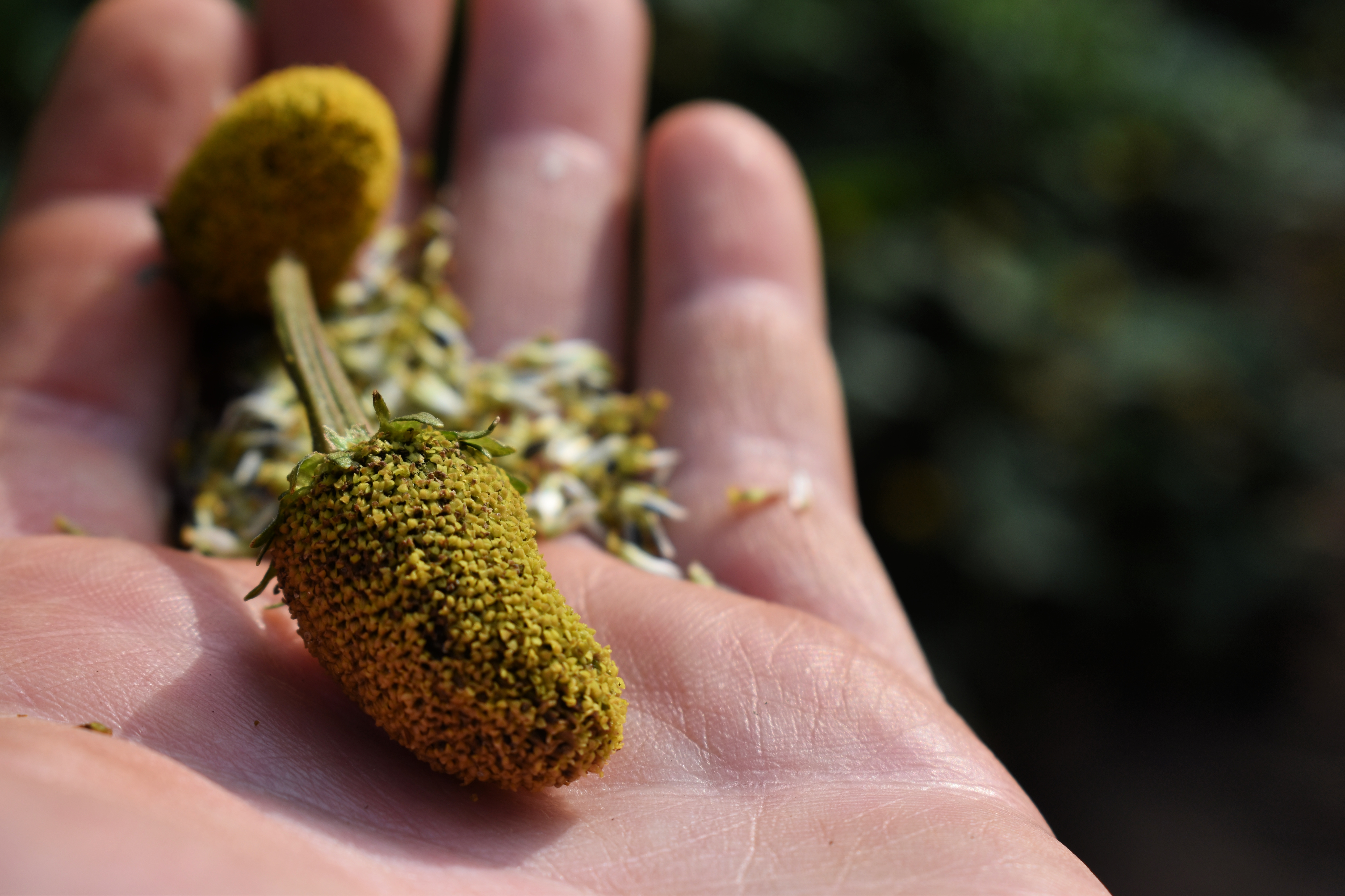
The picture below shows the optimum time to harvest. The flower has begun to elongate, so it’s larger, but the red center is still very prominent. This is what I look for when I’m harvesting.
The plants develop many flowers at all stages of growth, so I typically deadhead as I harvest. The ones that are too close to setting seed go into one basket (for the burn pile, because the amount of seeds these produce is very. . . generous).
The ones that I want to keep go into the harvest basket. Both leaves and flowers dry quickly on screens or in a single layer in a basket.
I generally prefer working with dried plants when I make my extracts. Spilanthes can also be harvested and used fresh and I plan to experiment with both as extracts. Herbalist Deb Soule of Avena Botanicals has a video about how she harvests and uses them, and she prefers fresh.
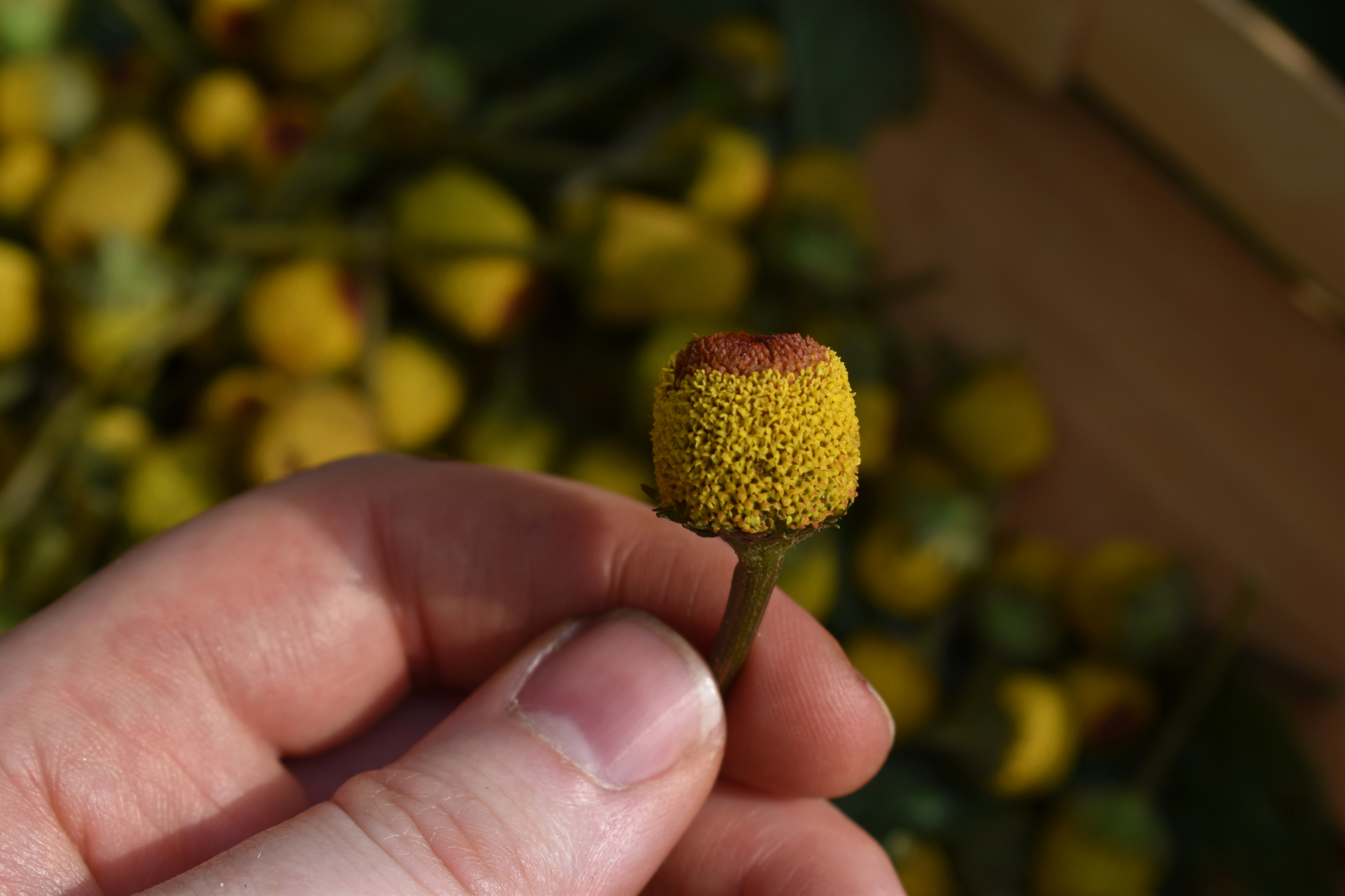
Saving seed from spilanthes
The easiest way to save spilanthes seeds is to wait for the flowers to dry on the plant. Once the flowers are fully dry, pick them and store them in a brown paper bag in a cool, dry place until spring. I’m not going to be too surprised if I have self-seeded volunteers in the garden next year, though! This definitely seems like the type of plant that will take advantage of any opportunity to establish itself.
